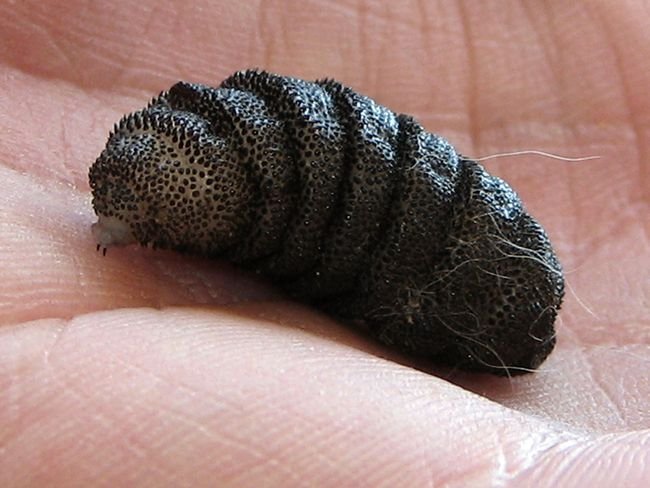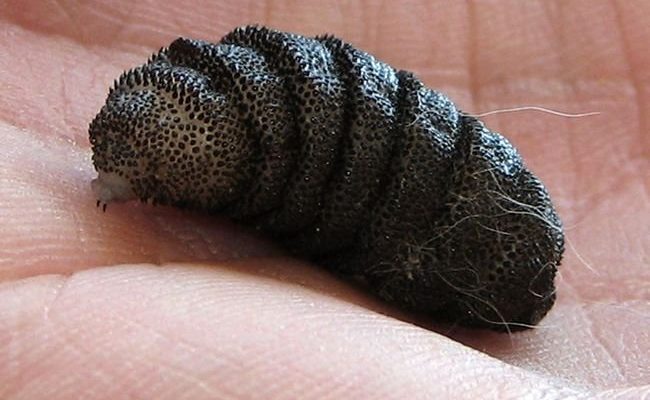
You might be wondering why anyone would be interested in wolf worm larvae. Well, understanding this process not only satisfies our curiosity about nature but also shines a light on how complex life cycles work. The relationship between larvae and adult botflies is a great example of survival and adaptation in the animal kingdom. Let’s dive in!
What Are Wolf Worm Larvae?
Wolf worm larvae, scientifically known as *Cuterebra*, are the larvae of botflies. They’re known for their parasitic lifestyle, living within the bodies of mammals, including rabbits and rodents. Picture a very intrusive house guest taking up residence in a cozy spot. The larvae are typically found in the fur or skin of their host, where they remain safe while they grow.
These larvae make their entry into the hosts’ bodies through open wounds or by penetrating the skin. Once inside, they feast on the host’s nutrients. While this might sound brutal, it’s essential to remember that it’s a natural part of their life cycle. The fascinating part is how they develop from these unassuming larvae to adult botflies, which I’ll explain next.
The Life Cycle of Botflies
Botflies go through a complete metamorphosis—meaning they transition through distinct life stages: egg, larva, pupa, and adult. If you think of this as a four-act play, each act has its role in the grand performance of life.
1. **Egg Stage**: It all begins when female botflies lay their eggs on the fur of a host animal. The eggs are tiny, almost like specks of dust.
2. **Larval Stage**: Once the eggs hatch, the wolf worm larvae emerge. They burrow into the host, where they spend a few weeks growing and developing.
3. **Pupal Stage**: After their feeding period, the larvae drop out of the host to pupate in the soil or vegetation. This is like their cocoon stage.
4. **Adult Stage**: Finally, they emerge as adult botflies, ready to repeat the cycle.
This life cycle can take anywhere from a few weeks to several months, depending on environmental factors. Each phase is crucial, contributing to the survival of the species.
How Do Larvae Transition to Pupae?
The transition from larvae to pupae is an intriguing part of the wolf worm’s development. Once the larvae reach maturity, they need to leave their host. This is a pivotal moment—like a teenager finally moving out of their parents’ house to start their own life.
The larvae will exit the host’s body, often through a small wound. Once they’re out, they look for a safe location to pupate. This could be in the ground or hidden among leaves. Here’s the process broken down:
– **Migration Out**: The larvae instinctively know it’s time to exit. They’ll wriggle their way out, which is a pretty remarkable feat considering how snug they’ve been inside.
– **Find a Safe Spot**: After leaving the host, they search for a secluded and safe place. This could be anywhere from soil to leaf litter.
– **Burrowing**: Upon finding a suitable spot, they burrow in to create a protective environment for themselves as they prepare for the pupal stage.
During this time, the larvae enter a resting state, which is often referred to as the pupal stage. Here’s where the real magic happens.
The Pupal Stage: A Time of Transformation
The pupal stage is often considered the most crucial part of the botfly’s transformation. Imagine it as a personal retreat—a time to rest and get ready for a big reveal. Inside the pupal casing, the larvae undergo significant changes to become adult botflies.
Here’s what happens during this stage:
– **Body Restructuring**: The pupae experience an incredible transformation. Their body structures break down and reassemble into the form of an adult botfly. This process is called **metamorphosis**, and it’s quite the dramatic change!
– **Development of Adult Features**: As they change, we can see the development of features such as wings, legs, and reproductive organs. It’s like fashioning a new outfit for a grand event!
– **Duration of Pupal Stage**: This stage can last several weeks to months, depending on temperature and environmental conditions. Warmer conditions usually speed up the process.
Once the pupae are ready, they will eventually burst out into the world as adult botflies.
Emergence as Adult Botflies
Finally, the adults emerge! This is akin to a grand opening—when all the hard work pays off, and the new botfly is ready to take on the world. Adult botflies are typically short-lived, only around 7 to 10 days, but their primary goal during this time is to reproduce and continue the cycle.
Upon emerging, adult botflies:
– **Seek a Mate**: The first order of business is to find a partner. They engage in mating rituals that are quite fascinating. The males often have to impress the females with their prime territory.
– **Lay Eggs**: After mating, females will search for suitable hosts where they can lay their eggs. This brings us back to the beginning of the cycle, showing how interconnected all these stages are.
The emergence of adult botflies marks the completion of their life cycle. Understanding this process sheds light on the complexities of ecosystems and how these creatures interact with their environment.
The Importance of Understanding Botflies in Nature
Understanding the transition from wolf worm larvae to adult botflies isn’t just about the creatures themselves; it reflects larger ecological roles. These botflies can serve as indicators of the health of mammal populations. Their presence can signal a healthy ecosystem, while a decline might indicate larger environmental issues.
Here’s why this matters:
– **Biodiversity Indicators**: Botflies can help biologists track biodiversity within ecosystems, giving clues about species survival and adaptation.
– **Parasite Dynamics**: Studying these transitions helps us learn about host-parasite relationships. This can inform wildlife management strategies and conservation efforts.
– **Ecosystem Health**: If botfly populations are thriving, it usually means that the ecosystem is balanced and supports a variety of life forms.
In summary, the journey from wolf worm larvae to adult botflies is a remarkable tale of survival, adaptation, and transformation. Each stage is critical—not just for the botflies but for the ecosystem as a whole.
In conclusion, nature has a way of showing us just how interconnected life is. Understanding these transformations reminds us of the delicate balance in our ecosystems and the importance of preserving wildlife. So next time you hear about wolf worm larvae or botflies, you’ll know there’s a whole story behind their intriguing life cycle!

